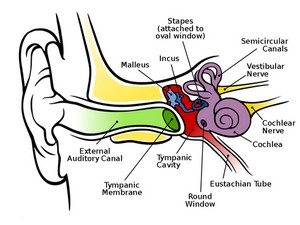Tras identificar una síntesis particular de una determinada
proteína, científicos de Canadá pudieron revertir algunos síntomas en
ratones. Según los expertos, se abre el camino hacia nuevas
terapéuticas, incluso farmacológicas.
La noticia se publicó en Nature y está dando la vuelta al mundo: la
evidencia directa de que una alteración en la síntesis de proteínas
puede provocar comportamientos autistas en ratones abre una posible vía
para identificar nuevas dianas terapéuticas para los síndrome
relacionados con el espectro autista.Los investigadores de la Universidad McGill y la Universidad de Montreal (Canadá) aseguran haber identificado un vínculo crucial entre la síntesis de proteínas y los trastornos del espectro autista, un hallazgo que, a su juicio, puede impulsar el desarrollo nuevas vías terapéuticas.
La regulación de la síntesis de proteínas, también conocida como ARNm, es el proceso por el cual las células fabrican proteínas. Este mecanismo, explican los investigadores, está involucrado en todos los aspectos de la función celular y del organismo. Los investigadores encontraron que la síntesis anormalmente elevada de un grupo de proteínas neuronales, llamadas neuroliginas, causa síntomas similares a los que se diagnostica en los casos de trastornos del espectro autista.
El estudio reveló que las conductas asociadas al autismo pueden ser rectificadas en los ratones adultos con compuestos que inhiben la síntesis de proteína, o con una terapia génica que tenga como diana la neuroliginas.
El equipo estaba investigando, en realidad, el papel de la síntesis de proteínas en la etiología del cáncer, y vieron con sorpresa que mecanismos similares a los que investigan pueden estar asociados en el desarrollo del autismo.
Según explica el profesor Nahum Sonenberg, del Departamento de Bioquímica de McGill, Facultad de Medicina y el Centro de Investigación del Cáncer Goodman, emplearon un modelo de ratón en el que se eliminó un gen clave que controla el inicio de la síntesis de proteínas. "Vimos que se incrementaba la producción de neuroliginas, proteínas importantes en la formación y regulación de las conexiones conocidas como sinapsis entre las células neuronales en el cerebro y esenciales para el mantenimiento del equilibrio en la transmisión de información de una neurona a otra".
El trabajo, subrayan, es el primero en relacionar la traducción de control de neuroliginas con la alteración de la función sináptica y los comportamientos similares al autismo en ratones.
Neurodesarrollo
Los trastornos del espectro autista abarcan una amplia gama de enfermedades del neurodesarrollo que afectan a tres áreas de comportamiento: interacción social, comunicación y comportamientos e intereses restringidos, repetitivos y estereotipados.
Se calcula que entre 4 y 20 de cada 10.000 niños de la población general padecen un trastorno del espectro autista. Generalmente es cuatro a cinco veces más frecuente en niños que en niñas, y no se asocia con ningún grupo socioeconómico. Generalmente se detecta en los primeros 2 o 3 años de la vida del niño.
Fuente: Nature




 The
key take-away is that while barriers remain large, the team felt
overall that a real pathway is possible in the next decade or two.
The
key take-away is that while barriers remain large, the team felt
overall that a real pathway is possible in the next decade or two. 




 Observing without destroying
Observing without destroying